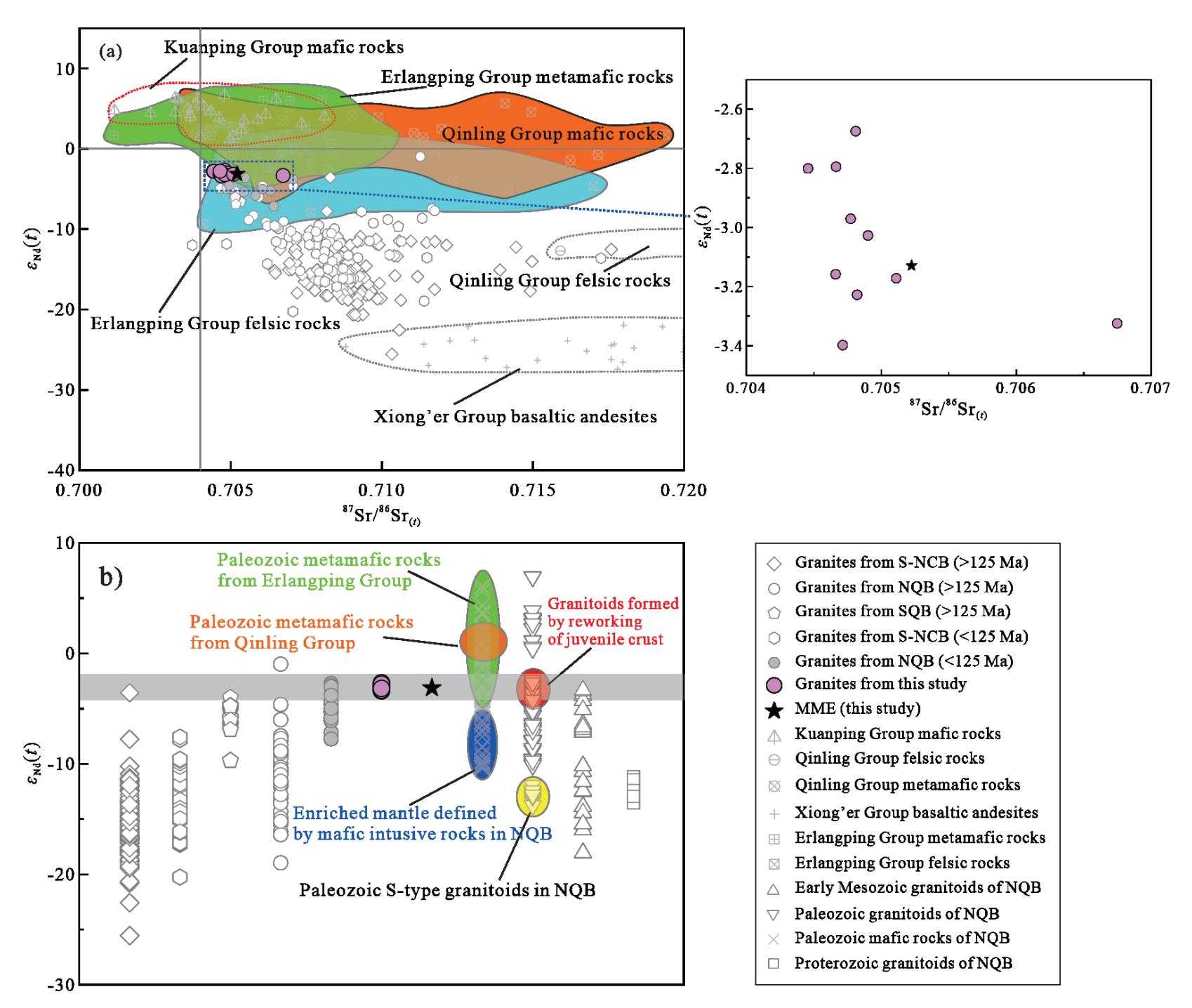Mesozoic granitoids, ranging from the Triassic to the Cretaceous, are widely distributed in Qinling orogen, and they provide excellent clues for understanding the crustal evolution and geodynamic evolution of the orogenic belt.
Recently, the research team led by Prof. SUN Weidong from the Institute of Oceanology of the Chinese Academy of Sciences (IOCAS) and Prof. CHEN Fukun from University of Science and Technology of China (USTC) provided a data set comprising zircon Uranium-Lead (U-Pb) dating and elemental and Strontium-Neodymium (Sr-Nd) isotopic geochemistry for Late Mesozoic granite and microgranular enclaves (MME) exposed in the Taibai complex pluton.
The study was published in Journal of Earth Science.
Reaserchers found that the granite and MME yield concordant U-Pb zircon ages of 124 Ma to 118 Ma, indicating roughly simultaneous magmatism in the Late Mesozoic. The granite rocks are characterized by enrichment in large ion lithophile elements (e.g., Rb, Ba), depletion in high field strength elements (e.g., Nb, Ta, Zr, Ti), and variable Sr/Y ratios of 7.64 to 63.6. "Low MgO, Cr, and Ni contents imply that the magmas were essentially crustal-derived," said XUE Ying-Yu, first author of the study.
Results revealed that both the granite and the MME show relative depletion in Sr-Nd isotopic composition (initial 87Sr/86Sr of 0.7044 to 0.7067, initial εNd values of -3.4 to -2.6), suggesting that the magma(s) originated from juvenile crustal rocks. These Sr-Nd isotopic characteristics are significantly different from those of other Late Mesozoic granitoids exposed elsewhere in the Qinling orogenic belt, which formed from much older and enriched sources and with negligible contributions from mantle or juvenile crust.
"We proposed a reworking event of the juvenile crust during the Late Mesozoic that was triggered by the tectonic extension and subsequent asthenospheric upwelling that occurred in eastern China," said Prof. SUN.
The research was supported by the Ministry of Science and Technology of China, the Strategic Priority Research Program of the Chinese Academy of Sciences, the National Natural Science Foundation of China, and the partly supported by the China Postdoctoral Science Foundation to LIU Haiyang.

Sr-Nd isotopic compositions for granitoids from Qinling orogenic belt
Xue, Y-Y., Liu, H., Wang, Z., Sun W., Chen F. (2022). Reworking of the Juvenile Crust in the Late Mesozoic in North Qinling, Central China. Journal of Earth Science.
LIU Haiyang
Institute of Oceanology
E-mail: hyliu@qdio.ac.cn
(Editor: ZHANG Yiyi)
|
|

Address: 7 Nanhai Road, Qingdao, Shandong 266071, China
Tel: 86-532-82898902 Fax: 86-532-82898612 E-mail: iocas@qdio.ac.cn


